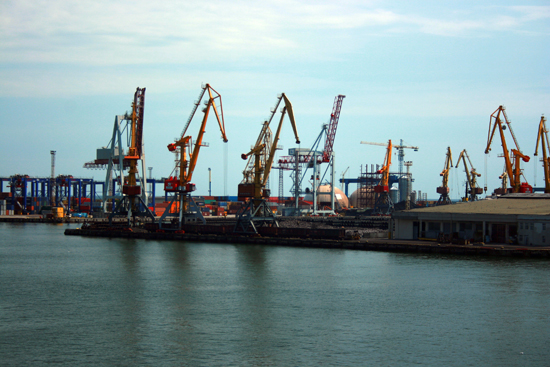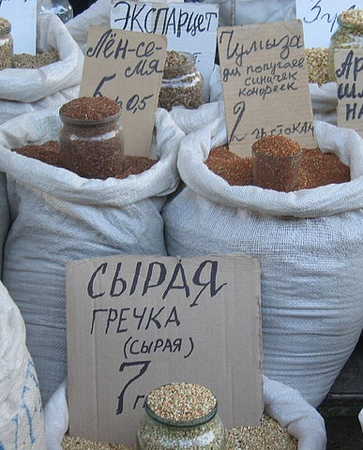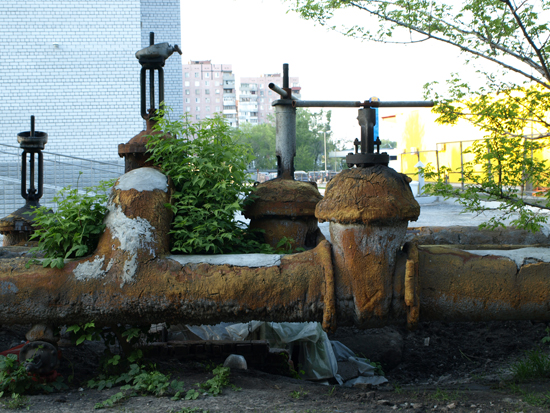Ukraine’s economy is heavily dependent on its exports, which account for about half of its GDP. Although its most important trading partners are former members of the Soviet Union, the European Union (EU) is also a major trading partner. The country is entirely dependent on imports to meet its nuclear fuel needs, and Ukraine relies on imported oil and natural gas to meet about three-quarters of its annual oil and natural gas requirements. Russia is the principal supplier of oil to Ukraine; natural gas is obtained from Russia, Turkmenistan, Kazakhstan, and Uzbekistan.
However, the crisis between Ukraine and Russia over the Crimea peninsula that broke out in 2014, and escalated through Russia's unprovoked attack on Ukraine in February 2022, led Russia to cut off gas deliveries to Ukraine. Ukraine also owns and operates the natural gas pipelines in its territory that transit Russian natural gas to Western Europe.
Russia's February 2022 invasion of Ukraine resulted in the Ukrainian economy shrinking by nearly 50 percent that year. Hospitals, ports, fields, bridges, and other Ukrainian infrastructure were destroyed by the unprovoked Russian attack.
Trade History
The first peoples known to have settled in what is now Ukraine were colonists and traders who established trading outposts that eventually became city-states. By the 11th century, Kyiv—located on lucrative trade routes—was at the center of the largest state in Europe. Mongol raiders destroyed Kyiv in the 13th century, and the territory that is modern-day Ukraine was annexed by Poland and Lithuania.
In the 19th century, under control of the Austo-Hungarian Empire, the region was largely agricultural and the locus of little trading activity. Following World War II and the Russian Revolution, the western part of Ukraine’s territory was incorporated into Poland, and the eastern regions became part of the Soviet Union. As part of the Soviet Union, Ukraine produced about four times the output of the next ranking republic. Its farms supplied large amounts of milk, grain, meat, and other vegetables to other Soviet republics, as well as unique equipment and raw materials for use in industrial and mining applications.
In 2008 the nation joined the World Trade Organization (WTO); that same year, the country launched negotiations with the EU for a deep and comprehensive free trade agreement (DCFTA). Part of a larger EU Association Agreement, the DCFTA aimed to deepen the nation’s access to the European market and open doors to further European investment in the country.
Top Export Partners
While countries of the former Soviet Union remain key trading partners, Ukraine’s trade is becoming more diversified. China purchases most of Ukraine’s exports followed by Poland and Russia.
Major Export Products and Services
Ukraine exports fuel and petroleum products, ferrous and nonferrous metals, chemicals, machinery and transport equipment, and food products. Agricultural products are the top export, as Ukraine produces significant amounts of grain, sunflower seeds, and beet sugar. Iron ore and steel are also top country exports.
Top Import Partners
China is Ukraine's top importer, followed by Germany and Belarus.
Major Import Products and Services
Ukraine imports machinery and equipment, energy, and chemicals. The country imports approximately 80 percent of its oil and natural gas.
Barriers to Trade (Tariff and Non-Tariff)
Ukraine’s weighted-average tariff rate hovers at about three percent. Market access barriers for services, complex standards and certification regulations, import taxes and fees, import licensing requirements, export restrictions, non-transparent government procurement practices, and weak enforcement of intellectual property rights add to the cost of trade. While there have been improvements in customs procedures, customs valuations are not always predictable.
Major Ports
Ukraine's major ports include Feodosiya, Illichivsk, Mariupol, Odesa, and Yuzhnyy.
Article written for World Trade Press by Randall Frost.
Copyright © 1993-2024 World Trade Press. All rights reserved.






